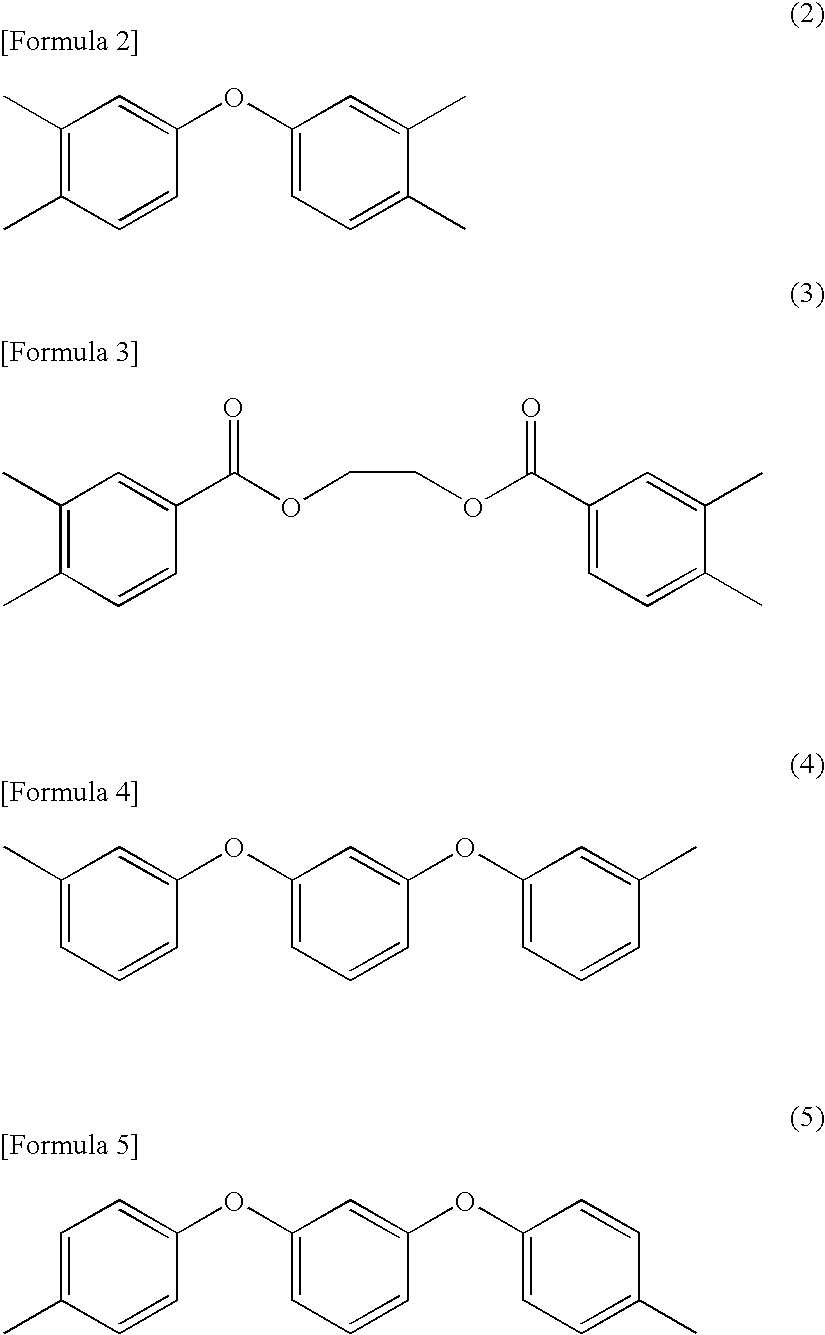Photosensitive Resin Composition and Photosensitive Film
- Summary
- Abstract
- Description
- Claims
- Application Information
AI Technical Summary
Benefits of technology
Problems solved by technology
Method used
Image
Examples
working example 1
[0191]10 g of a polyamide acid (i) with γ-butyrolactone (organic solvent) as the solvent, 0.86 g of 4′-hydroxyphenyl acetoanilide (0.7 equivalent relative to the carboxyl group of the polyamide acid), and 0.42 g of the quinone diazide compound (10) (20 parts by weight relative to the polyamide acid) were placed in a 50 cc glass bottle, a stirrer was placed thereinto, and stirred to homogeneity in order to obtain a photosensitive polyamide acid composition 1. Using the polyamide acid composition 1 obtained, an alkali dissolution test was carried out in the above methods 2-1 to 2-6, and the results shown in Table 2 were obtained.
in Formula (10), the introduction rate of Q is 280 / 300 mol.
working example 2
[0192]10 g of a polyamide acid (i) with γ-butyrolactone (organic solvent) as the solvent, 0.78 g of 4-hydroxyphenyl benzamide (0.7 equivalent relative to the carboxyl group of the polyamide acid), and 0.42 g of the quinone diazide compound (10) (20 parts by weight relative to the polyamide acid) were placed in a 50 cc glass bottle, a stirrer was placed thereinto, and stirred to homogeneity in order to obtain a photosensitive polyamide acid composition 2. Using the polyamide acid composition 2 obtained, an alkali dissolution test was carried out in the above methods 2-1 to 2-6, and the results shown in Table 2 were obtained.
working example 3
[0193]10 g of a polyamide acid (i) with γ-butyrolactone (organic solvent) as the solvent, 0.63 g of 3-hydroxyphenyl urea (0.5 equivalent relative to the carboxyl group of the polyamide acid), and 0.42 g of the quinone diazide compound (10) (20 parts by weight relative to the polyamide acid) were placed in a 50 cc glass bottle, a stirrer was placed thereinto, and stirred to homogeneity in order to obtain a photosensitive polyamide acid composition 3. Using the polyamide acid composition 3 obtained, an alkali dissolution test was carried out in the above methods 2-1 to 2-6, and the results shown in Table 2 were obtained.
PUM
| Property | Measurement | Unit |
|---|---|---|
| Temperature | aaaaa | aaaaa |
| Temperature | aaaaa | aaaaa |
| Length | aaaaa | aaaaa |
Abstract
Description
Claims
Application Information
 Login to View More
Login to View More - R&D
- Intellectual Property
- Life Sciences
- Materials
- Tech Scout
- Unparalleled Data Quality
- Higher Quality Content
- 60% Fewer Hallucinations
Browse by: Latest US Patents, China's latest patents, Technical Efficacy Thesaurus, Application Domain, Technology Topic, Popular Technical Reports.
© 2025 PatSnap. All rights reserved.Legal|Privacy policy|Modern Slavery Act Transparency Statement|Sitemap|About US| Contact US: help@patsnap.com



